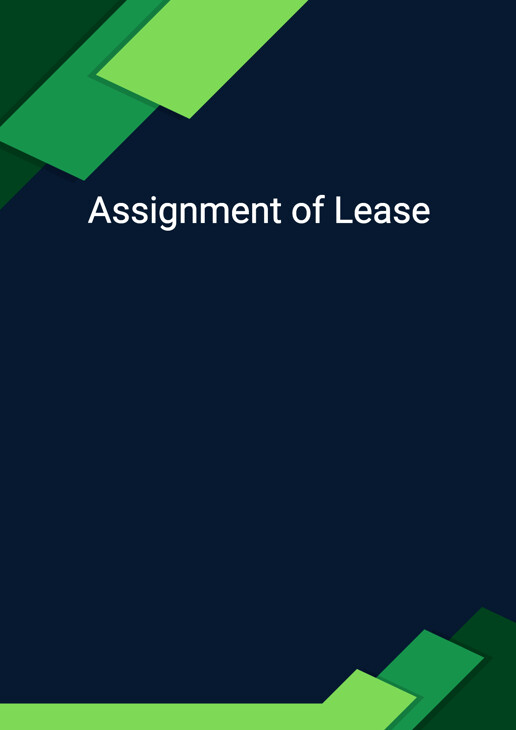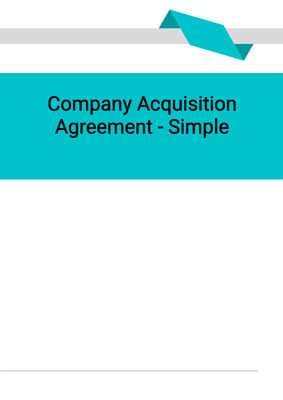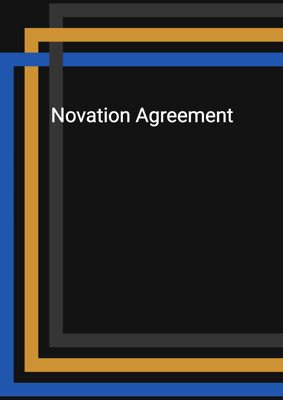
Assignment of Lease
Full assignment, transfer and Release
A simple lease assignment agreement is to assign the rights and obligations of the lessee to the assignee with the consent of the lessor. A full assignment of all the lessee's rights and release the lessee's obligations from liability under the Agreement.
How to Tailor the Document for Your Need?
01
Create Document
Fill in the details of the parties. You can click the "Fill with Member’s Information" button to complete it with information saved to your account.
02
Fill Information
Please fill in any additional information by following the step-by-step guide on the left hand side of the preview document and click the "Next" button.
03
Get Document
When you are done, click the "Get Document" button and you can download the document in Word or PDF format.
04
Review Document
Please get all parties to review the document carefully and make any final modifications to ensure that the details are correct before signing the document.
Document Preview
Document Description
The 'Assignment of Lease' document is a lease assignment agreement that is entered into between three parties: the assignor, the assignee, and the counterparty. The document is important as it allows the assignor to transfer their rights, title, benefit, and interest in the lease agreement to the assignee, while also releasing the assignor from any obligations and liabilities under the agreement. The assignee agrees to accept and perform all the duties and obligations of the assignor, and the counterparty agrees to the substitution of the assignee as a party to the agreement.
The document consists of several sections:
1. Assignment: This section outlines the assignment of the lease agreement from the assignor to the assignee. It states that the assignor transfers all their rights, title, benefit, and interest in the agreement to the assignee, who will assume and perform all the duties and obligations of the assignor. The counterparty also agrees to the substitution of the assignee as a party to the agreement.
2. Further Assurance: This section states that each party agrees to perform any further acts and execute any further documents necessary to implement and give effect to the assignment.
3. Counterparts: This section allows the assignment to be executed in multiple counterparts, with each counterpart being considered an original document.
4. Mutual Release and Indemnities (optional): This section is included only if the variable 'indemnities' is set to 'yes'. It states that both the counterparty and the assignor release each other from any obligations or liabilities under the agreement before the assignment date. It also includes indemnities, where the assignee indemnifies the assignor against any claims or losses arising from their actions after the assignment date, and the assignor indemnifies the assignee against any claims or losses arising from their actions before the assignment date.
5. Mutual Release: This section is included if the variable 'indemnities' is not set to 'yes'. It states that both the counterparty and the assignor release each other from any obligations or liabilities under the agreement before the assignment date.
6. No Third Parties Rights under Agreements: This section clarifies that any person who is not a party to the assignment or the agreement has no right to enforce any of its terms.
7. Governing Law: This section states that the assignment and the relationship between the parties will be governed by and interpreted in accordance with the jurisdiction state law.
The document is signed by the duly authorized representatives of the parties.
How to use this document?
To use the 'Assignment of Lease' document, follow these steps:
1. Enter the names and principal places of business of the three parties involved: the assignor, the assignee, and the counterparty. Make sure to provide accurate and up-to-date information to clearly identify each party.
2. Review and understand the terms of the lease agreement that is being assigned. Familiarize yourself with the rights, obligations, and liabilities outlined in the agreement.
3. Execute the assignment by signing the document. Ensure that the authorized representatives of each party sign the document to make it legally binding.
4. If the 'indemnities' variable is set to 'yes', make sure to carefully review and understand the mutual release and indemnities section. This section outlines the release of obligations and liabilities between the counterparty and the assignor, as well as the indemnities provided by the assignee and the assignor.
5. If the 'indemnities' variable is not set to 'yes', review and understand the mutual release section. This section releases the counterparty and the assignor from any obligations or liabilities under the agreement before the assignment date.
6. Keep a copy of the lease agreement attached to the assignment document for reference. This will ensure that all parties have access to the terms and conditions of the original agreement.
7. If required by law or if necessary for implementation, perform any further acts, execute any further documents, and deliver any additional documents as specified in the further assurance section.
8. Ensure that each party receives a copy of the fully executed assignment document for their records.
9. Adhere to the governing law specified in the document. Interpret and enforce the terms of the assignment in accordance with the jurisdiction state law.
By following these steps, you can effectively use the 'Assignment of Lease' document and ensure a smooth transfer of rights and responsibilities between the parties involved.
Not the right document?
Don’t worry, we have thousands of documents for you to choose from:







